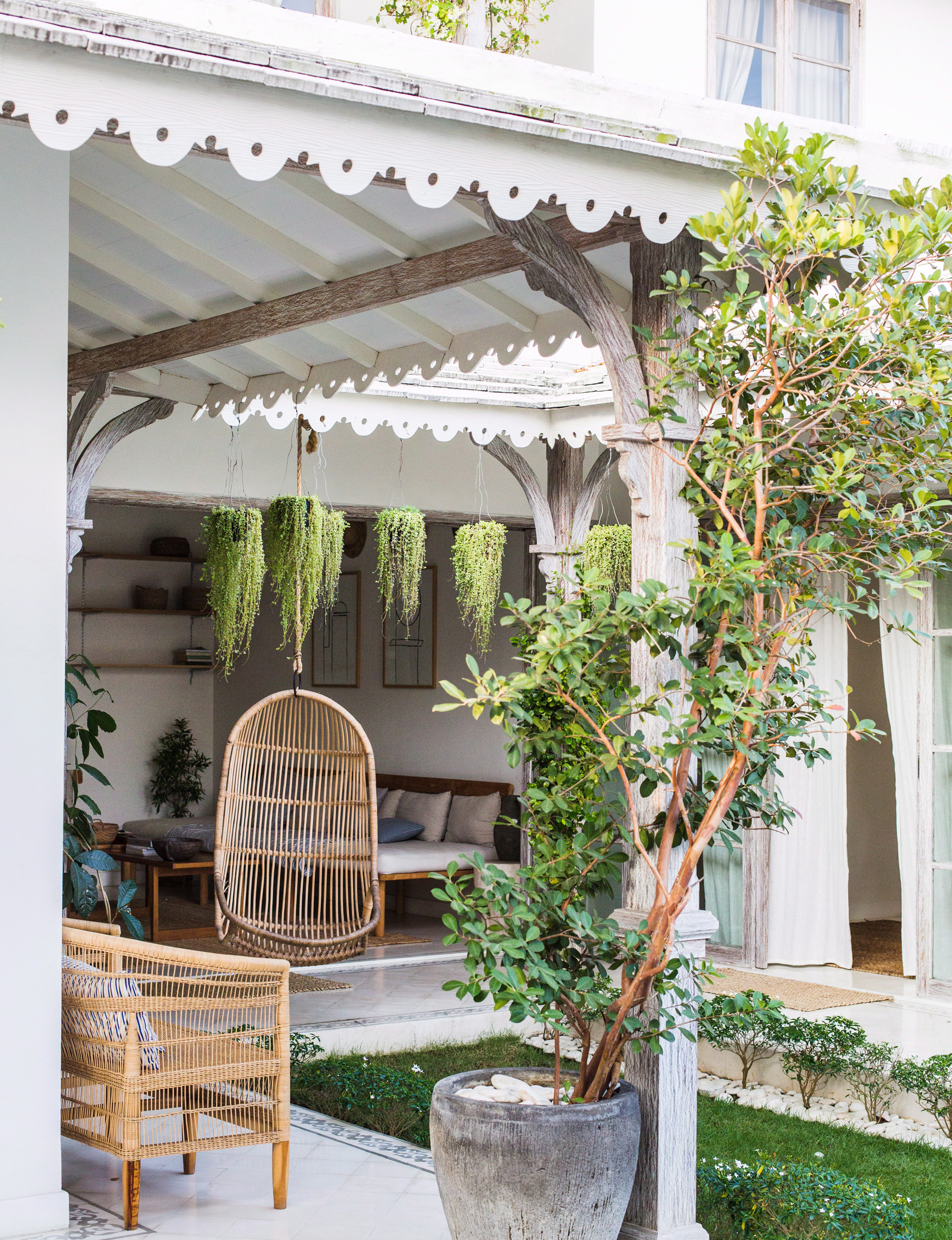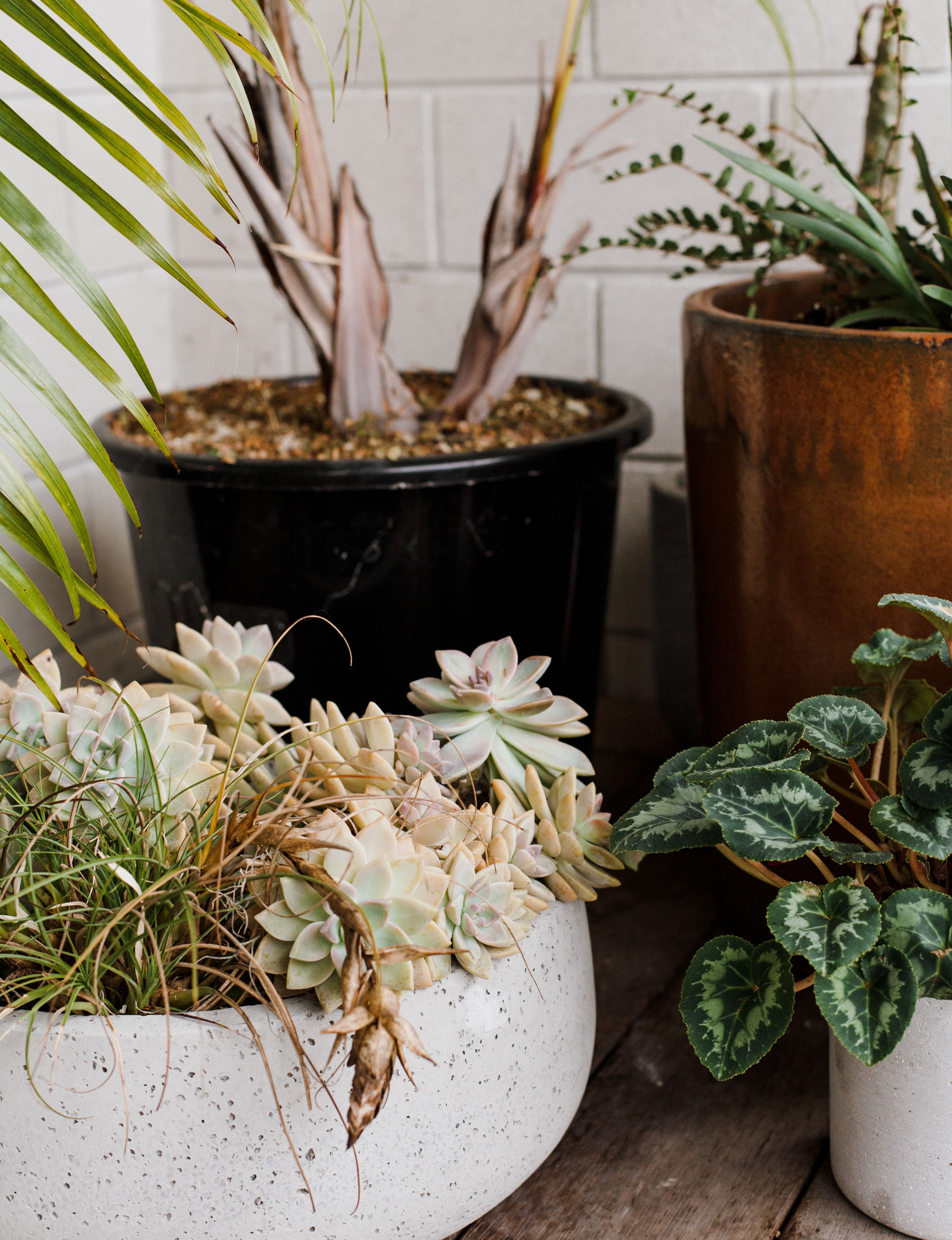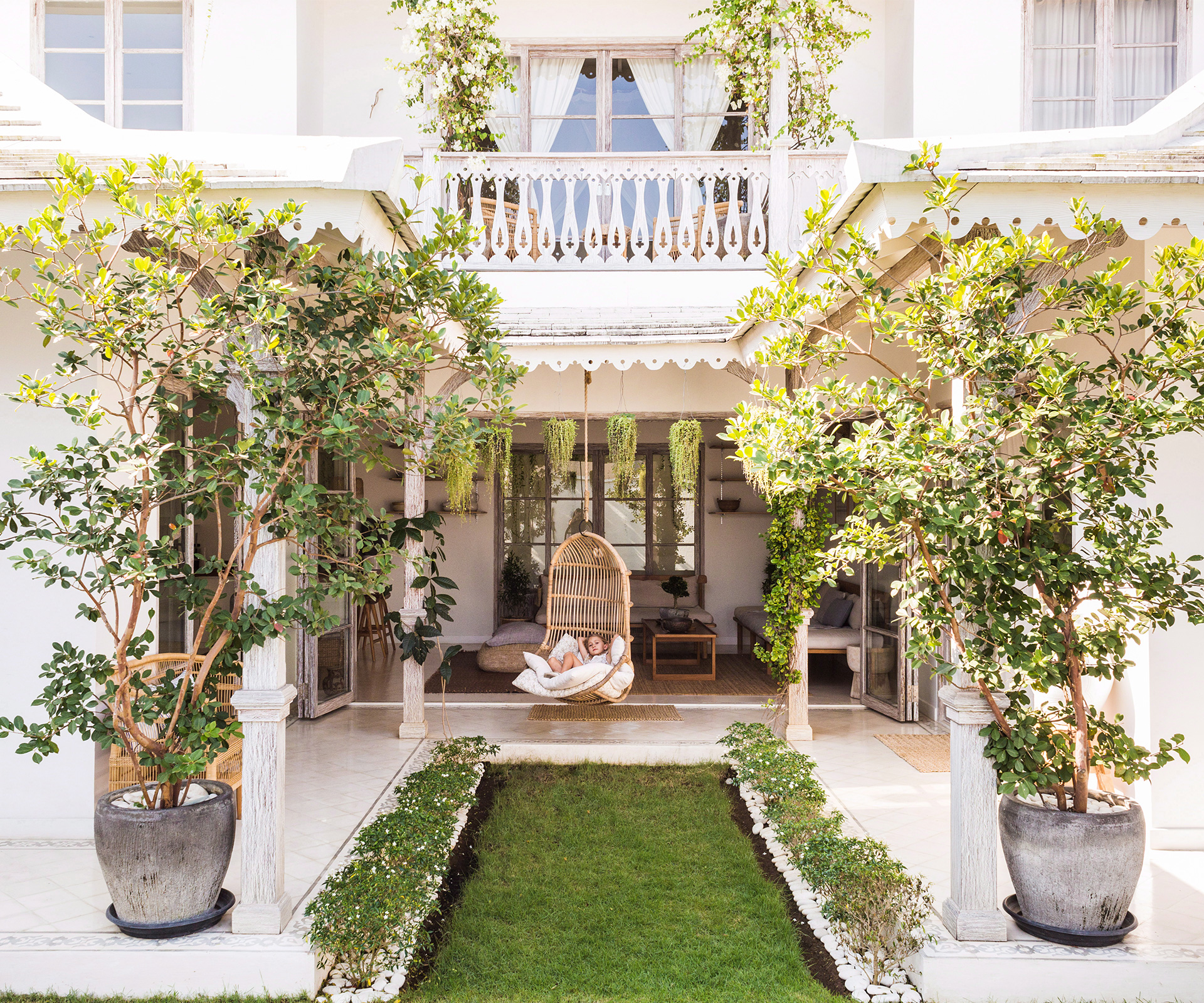Bring a plant parent can be hard, luckily you can use these five simple signposts to make sure you’re keeping them happy and healthy
The average size of a section has shrunk by about a third over the past 30 years, signalling the end of the Kiwi quarter-acre dream. But having only a small patch, balcony or terrace is no barrier to growing and enjoying an array of beautiful plants. Eye-catching containers will transform the smallest space when filled with colourful flowers, sun-loving succulents and grasses, or delicious herbs and edibles.
Plants in containers can’t search for their own food and water so they require more care than in-ground gardens. But with regular attention, they will flourish.
1. Drainage
First, make sure your pot has holes in the base for drainage. This will prevent the roots from sitting in water. Place broken crockery, pebbles or gravel at the bottom of the pot to help water drain freely and stop the holes getting blocked up. In winter use pot feet for additional drainage, and in summer place a saucer under the pot to help retain water.

2. Soil
Use a quality commercial container mix instead of garden soil to fill your pot. In a contained space, the right soil is essential. Plants require a balanced blend of minerals, nutrients and slow-release fertilisers to help keep them healthy and happy. Leave a gap of 3-5cm between the top of the soil and the rim to prevent dirt spilling over when you water.
3. Watering
Once your plant is in its pot, water it gently using a soft-spray nozzle on your hose. Continue until water starts to trickle out of the bottom of the pot. Plants dry out a lot quicker in pots, so check them regularly and add a layer of mulch on top to help retain moisture in the soil. Even in winter, pots and tubs may need watering once a week, depending on their requirements. Irrigation can be installed and automated to avoid the worry of watering if you go away on holiday.

4. Feeding
An essential part of keeping your plants healthy is to feed them regularly, especially during the growing season. Give them a top dressing of dry, slow-release fertiliser or apply a liquid blood-and-bone or fish/seaweed tonic, which you mix with water.
5. Grooming
Keep your plants looking good. Trim and remove tired-looking or broken leaves. Deadhead spent flowers promptly. Keep an eye out for signs of pests and diseases as these are easier to control if caught early.
Plant roots eventually fill containers and this often limits growth. If this happens, the plant may need to be moved to a bigger container. However, many palms, shrubs and trees can stay in a pot for years, especially if well looked after.
Words by: Sandra Batley. Photography by: The Virtue, Alice Veysey, Helen Bankers and Bauer Syndication.
This article was first published in Your Home and Garden. Follow YHG on Instagram, Facebook and sign up to the fortnightly email for inspiration between the issues.
EXPERT PROJECTS

Create the home of your dreams with Shop Your Home and Garden
SHOP NOW












